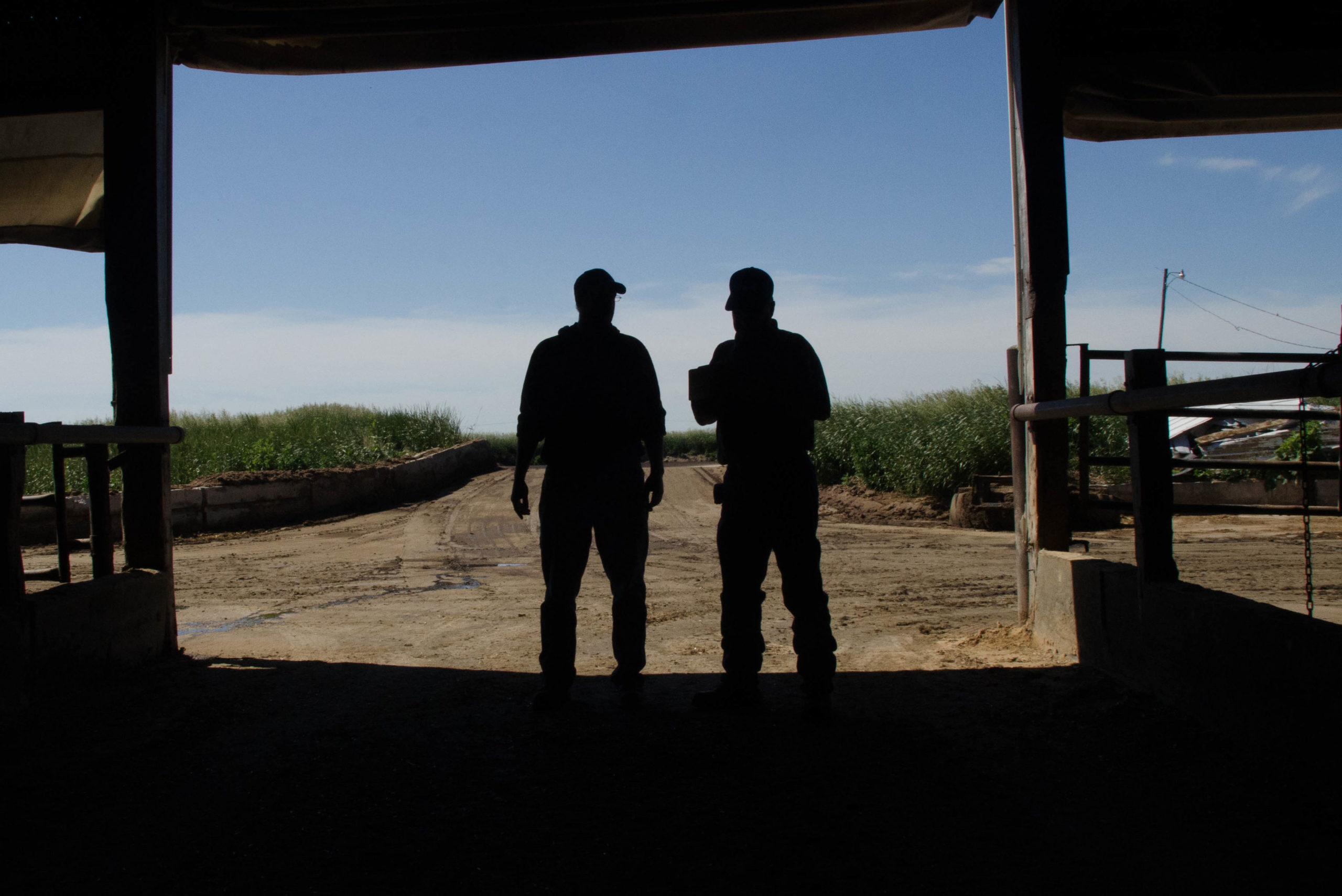Sitting on a five-gallon bucket, Ed Zuchnik chatted with MMPA Member Chris Fry, rattling off a mix of questions: “Who is your utility provider? What is your feed cost per cow? How many times a day are you milking?”
On this sunny morning, Zuchnik found himself five miles west of Lake Huron in Michigan’s thumb, performing a Type 2 farm energy audit on Sunrise Dairy. Zuchnik is the member representative supervisor for the South Area of MMPA. He is also one of MMPA’s certified energy auditors.
After addressing some basic questions about the farm and how it operates, Zuchnik headed out for a short tour of the dairy to note farm specifics such as lighting fixtures, compressor type and freestall dimensions. Surrounded by whirring wind turbines on the rural landscape, he focused in on the details of the farm to best evaluate the farm’s energy needs.
And the process doesn’t stop there. Energy audits occur in three steps: analysis of current energy use, a review of current versus proposed energy use and a report of recommendations.
But, why undergo an energy audit?
Energy audits provide a comprehensive look at energy usage on a particular dairy and outline recommendations for efficiency improvements. A report by the Michigan Farm Energy Program at Michigan State University found the average dairy farm saved $8,325 annually after undergoing an energy audit.
“In addition to increased energy efficiency, the benefits of the audit are a potential increase production and the ability to improve working conditions on the farm,” says Zuchnik.
Zuchnik spends approximately 40-60 hours preparing an energy audit report. He reviews past energy bills and production reports, contacts the member’s equipment dealer for quotes, and complies recommendations. This includes information on equipment upgrades and estimated pay-back periods to help farmers best understand where the potential savings—and costs—can be found.
“I offer my recommendations, and from there, the farm can do what’s best for them,” he explains.
Data from energy audits performed in Michigan by MMPA are shared with Aluel Go at the Michigan Farm Energy Program to assist with their research. An article, written by Go and Ben Van Zweden developed an energy profile of Michigan dairy farms as compared to Minnesota, Wisconsin and New York. At 761 kWh, Michigan was found to have a higher energy consumption per milk cow, by a factor of two to three times less energy efficient.
“Existing policies exempting agricultural operations in Michigan from both electrical and construction codes have prevented energy efficiency aspects embedded in these codes from being implemented on Michigan agricultural operations,” the report found. “Therefore, it is necessary to significantly improve energy efficiency in Michigan Dairy farms to at least remain competitive and even attain a competitive edge in the dairy industry.”
The article emphasizes the importance of viewing energy consumed by per pound of milk, though data on that ratio is not available in all of the other states. Strategies some dairies use to increase productivity, such as long-day lighting, robotic milkers and cooling systems, also increase energy consumption per cow. Yet, as the article describes, these tactics result in higher milk production and reduced labor needs, offsetting the energy cost. Michigan dairies studied had an average total energy used per pound of milk at 0.105 (kWh/lb).
The main purpose of the Michigan Farm Energy Program is to identify the current energy uses of dairy farms in Michigan and recommend energy efficiency improvements. Common energy conservation measures include: lighting, variable frequency drives (VFDs) on electric motors, manure handling, compressor upgrades, water heater upgrades and weatherproofing. Lighting and VFDs offer the highest potential percent savings at 35 and 32 percent, respectively.
On Sunrise Dairy, Fry hoped having an energy audit performed would provide insight on efficiency improvements for his operation. “I’m looking for savings on a VFD vacuum pump motor and even considering long day lighting on my farm,” he admitted.
VFDs on vacuum pump motors and milk pump motors are good energy conservation measures that eliminate the need to operate the pumps for an entire milking session at a fixed, full-capacity speed. With a VFD vacuum pump motor, speed varies based on the demand. Another benefit in reduced heat loss results from milk flowing through the pre-cooler at a slower and more continuous rate.
Farms can also consider replacing incandescent lighting with florescent or LED blubs. The concept of long-day lighting involves LED lighting for milking cows for 16 hours per day to increase milk production and improve cow comfort.
However, efficiency improvements involve an up-front investment for long-term savings. Though energy audits provide information on pay-back periods on recommended equipment, additional costs can be harder to manage in this fluctuating dairy market. Fortunately, private, state and federal organizations offer funding to assist with costs of energy efficiency upgrades. Many energy companies even offer rebates for farms who have undergone a Type 2 farm energy audit.
Yet it all starts with a few questions. From there, MMPA energy auditors can help producers learn how to efficiently power their dairies.
Looking for energy savings?
- Lighting
- Variable Frequency Drives (VFDs) on Electric Motors
- Manure Handling
- Compressor Upgrades
- Water Heater Upgrades
- Weatherproofing
–Allison Stuby
This article originally appeared in the August 2016 issue of the Michigan Milk Messenger.

